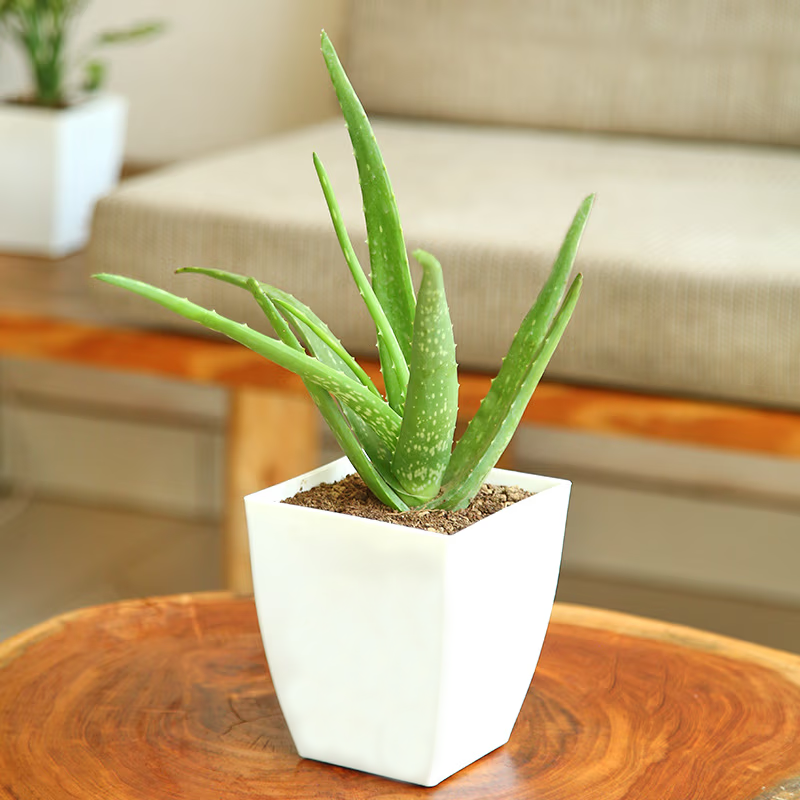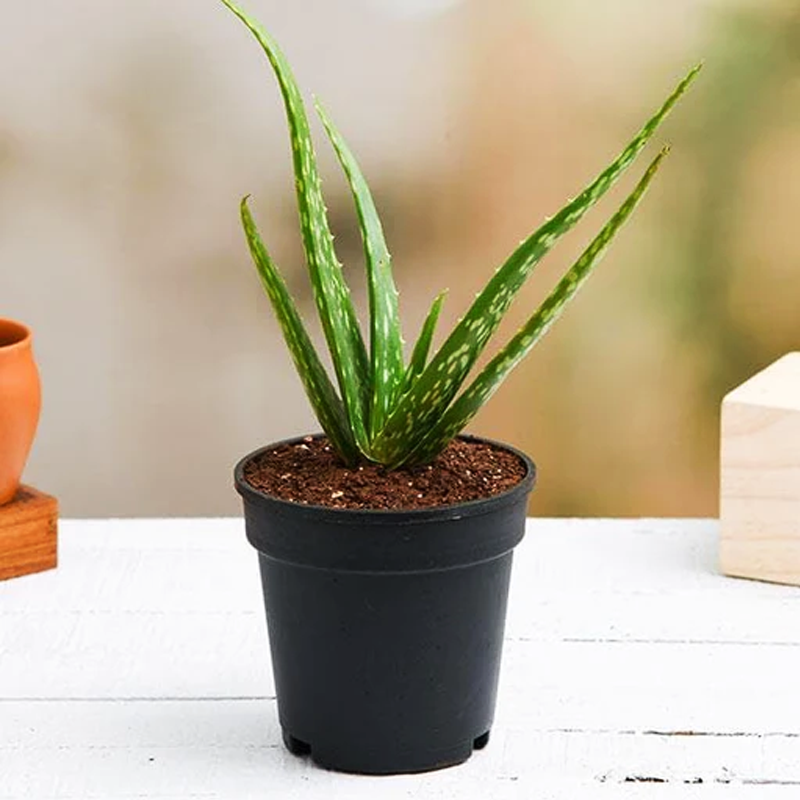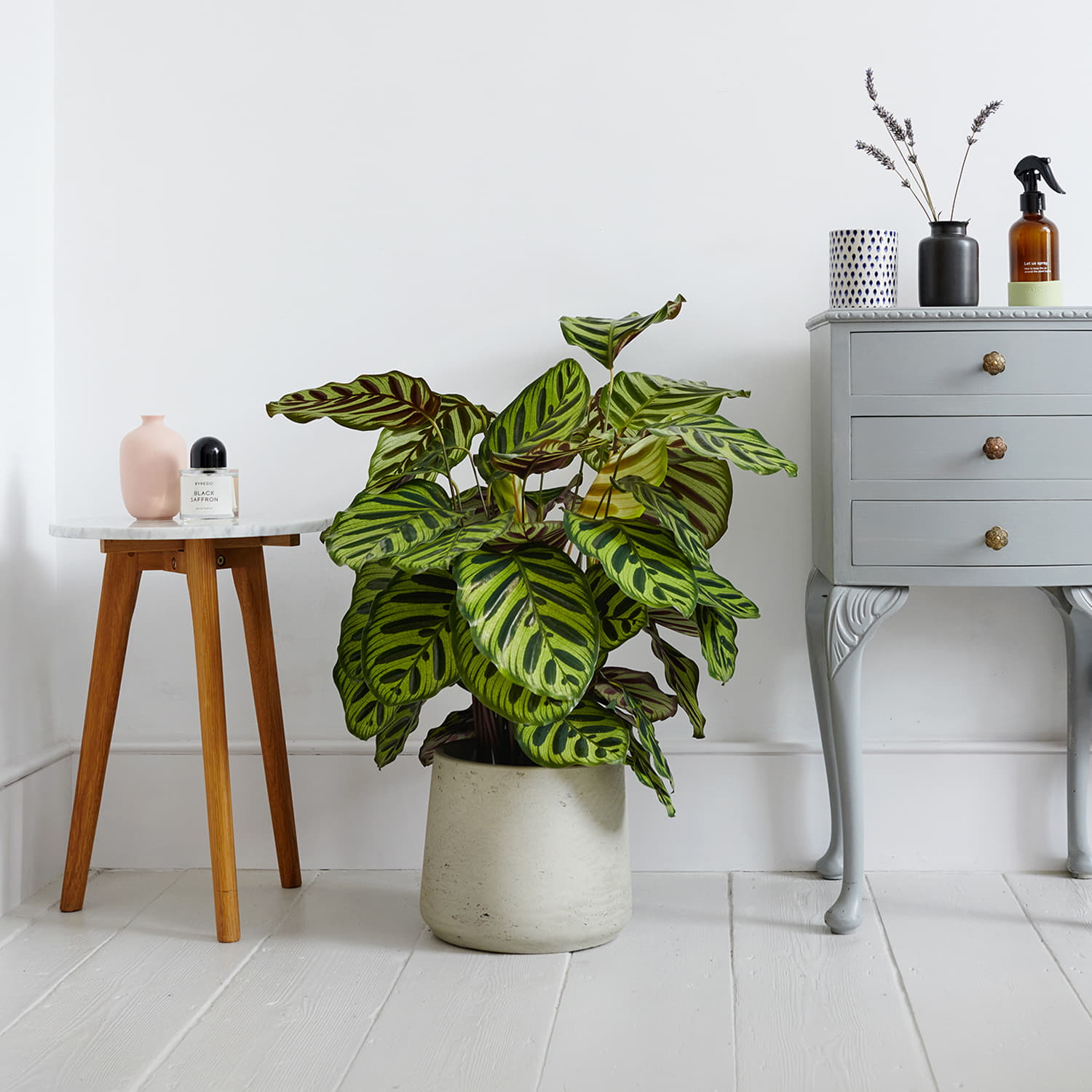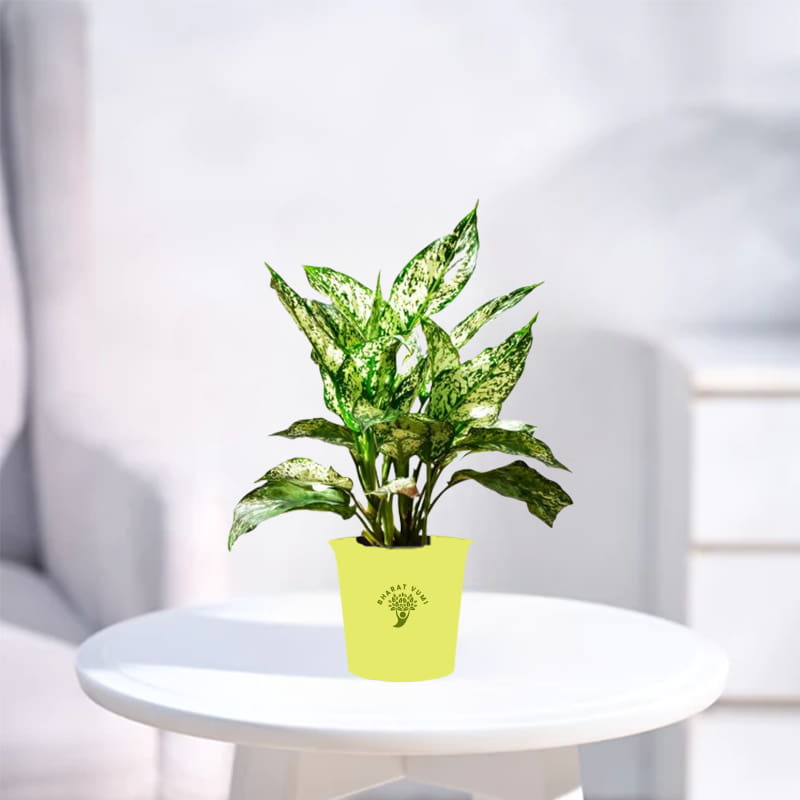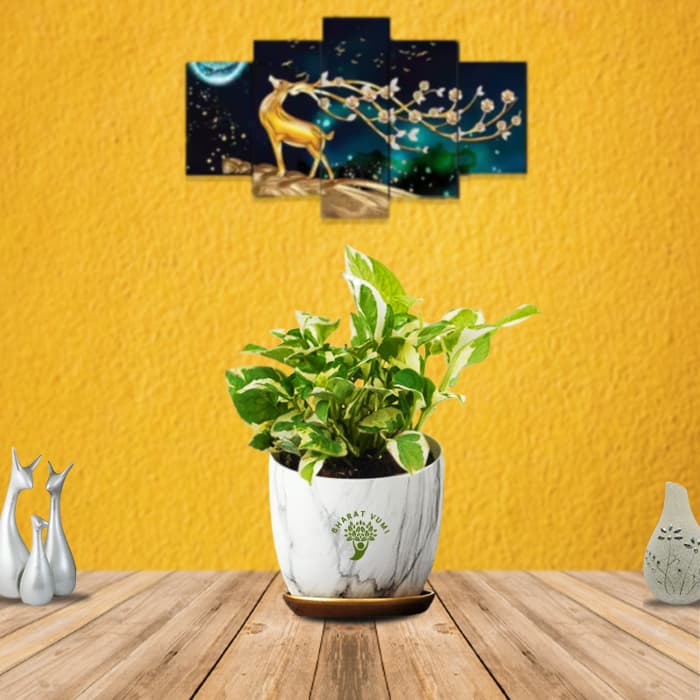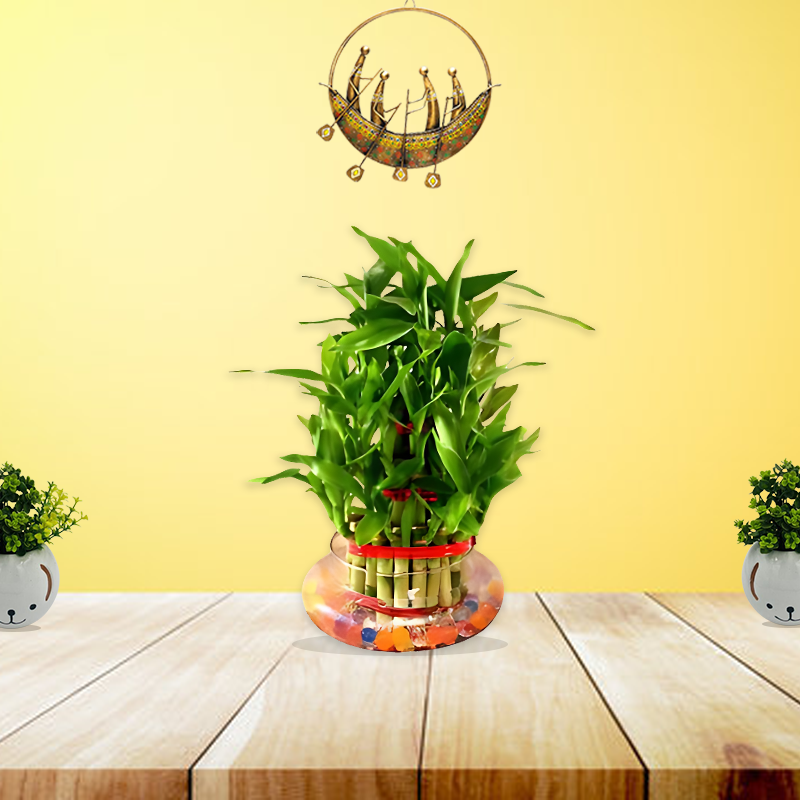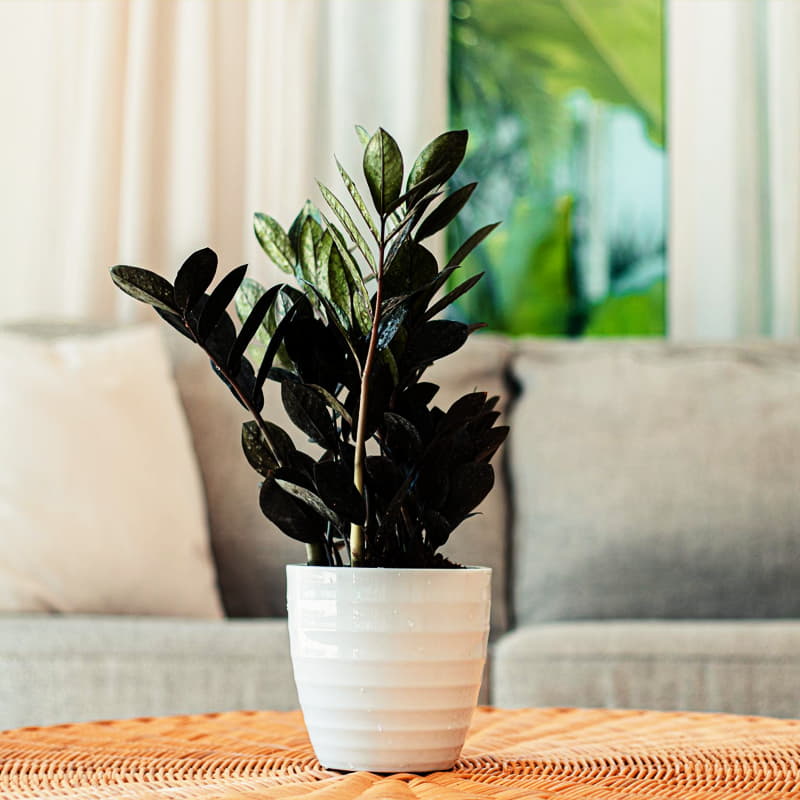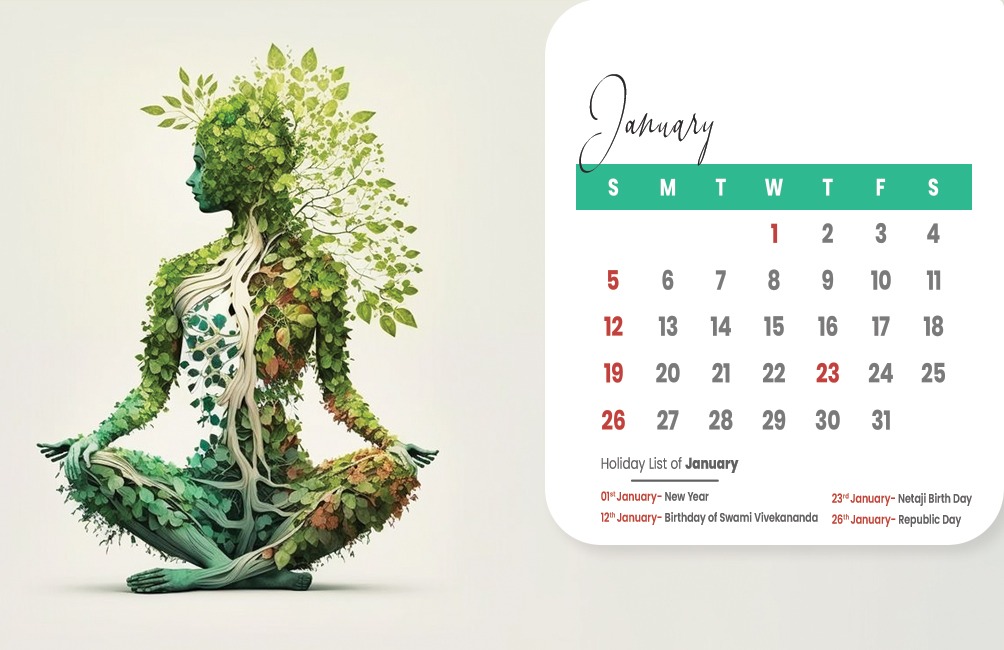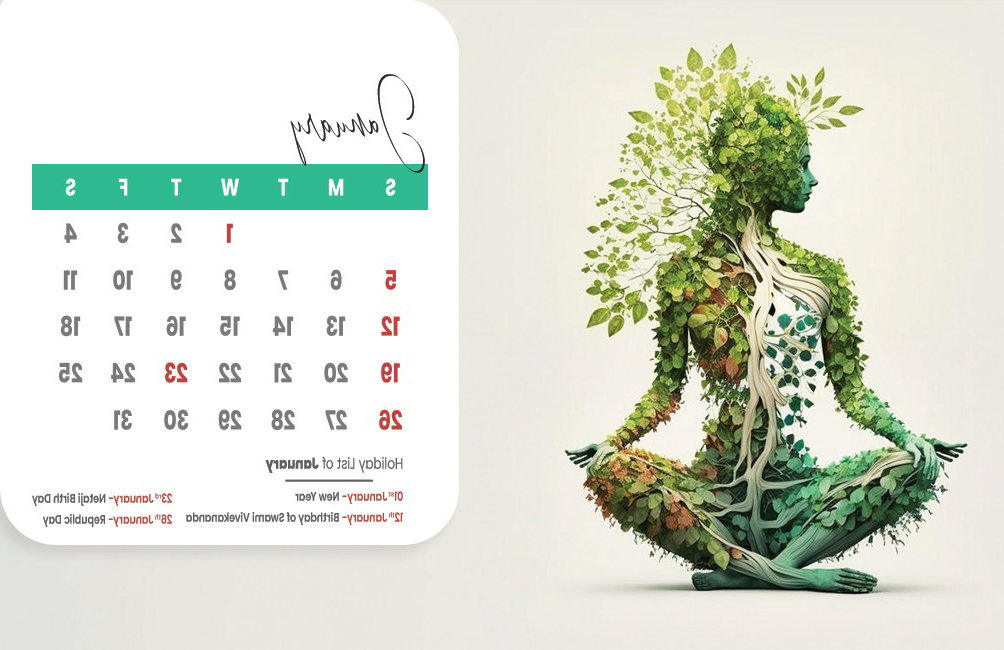Image(s) are for reference. Actual product might vary in some aspects like shape, size etc, from the one given in the image(s). However, we ensure what you get is close to the image(s) and of high quality. Our target is to deliver a healthy and well built plant. So relax after ordering and wait for an excellent delivery from Bharat Vumi that will bring smile on your face.
Package- A healthy Aloe Vera Plant (Without pot)
Plant Description:
Common Name- Aloe Vera
Scientific Name- Aloe
vera
Family- Asphodelaceae
Origin- Africa, Madagascar, Arabian Peninsula
Aloe vera is a thick short stemmed perennial herb which belongs to succulent plant category. Leaves of the plants are fleshy with sharp toothed edges. The plant is mainly cultivated for medicinal and commercial purposes. Other than this Aloe Vera is also grown as a houseplant for its beautiful fleshy foliage and low maintenance. This plant is considered as good luck plant in Feng Shui.
Benefits/Uses- Aloe Vera is commonly used for skin benefits for its moisturizing properties. It is also used to accelerate wound healing. Aloe Vera has antibacterial and anti-inflammatory properties, making it beneficial for acne prone skin.
The juice of aloe Vera helps in promoting digestive health. It is a good source of vitamin A, C & E. Other than health benefits aloe Vera is also used for aesthetic decorative purpose.
Growing Conditions-
1. Soil- Loose, rocky, well drained loamy soil is
best suited for aloe Vera.
2. Watering- Aloe Vera plant does not need much
water as it is originated from desert like environments. Excess water can cause
browning or yellowing of leaves. Watering once per week will be sufficient.
3. Temperature- 13°C -27°C is Ideal for growing aloe
Vera at homes, and 25°C-40°C for commercial cultivation.
4. Humidity- Aloe Vera grows well in dry climate.
They do not need much humidity at all.
5. Light requirements- Aloe Vera plant prefers 8-10
hours of sunlight a day.
6. Fertilization- Aloe Vera plants do not require
much fertilizer. Fertilize once a year or never. Apply low nitrogen, high
phosphorus and low potassium fertilizer such as 10:40:10 once a year in late spring.
7. Flowering- Aloe Vera plant blooms one a year, generally early
spring to summer.
8. Important Diseases-
Rust- Fungus created brown spot on the leaves.
Basal Stem rot- occurred due to cold or wet
conditions. Basal portion of the plant is affected.
These diseases can be prevented by watering
infrequently and only in early morning. Treat the soil with copper based fungicide.
9. Important Pests- Aloe Vera are generally
affected by sap sucking insects like aphids, scales, mealy bugs. These insects
suck saps from the plant and leaves a sticky substance (honey dew) behind the leaves.
Insecticidal soap, horticultural oil (ex-neem oil) can be used for controlling aphids.
Apply rubbing alcohol or chemical pesticide containing Thiamethoxam to control
mealy bug.
10. Pruning and Maintenance- Aloe vera is a very low maintenance plant.
Diseased a damaged leaves can be removed time to time .Pruning should be done
when the tip of the spike turn brown and brittle.
11. Propagation- Aloe Vera plant can be propagated
through baby aloe offsets or seeds or from stem cuttings.
| Type |
Perennial herb, Succulent |
|---|---|
| Benefits |
Used for skin benefits, wound healing, Digestive health |
| Planting Time |
Anytime of the year |
| Soil |
Light well drained loamy soil or rocky soil |
| Watering |
Do not need much water , once per week is sufficient |
| Temperature |
13°C -27°C |
| Humidity |
grow well in dry cliimate, don't need much humidity |
| Light Requirements |
8-10 hours of sunlight a day |
| Fertilization |
Do not require much fertilizer , fertilize once a year or never |
| Flowering |
Blooms once a year( Early spring - summer) |
| Common diseases |
Rust, Basal stem rot, sooty mold |
| Common Pests |
Aphids, scales, Mealy Bugs |
| Pruning |
Pruning can be done when the top of leaves turn brown and brittle |
| Dormancy Period |
Do not have a true dormancy period |
| Propagation |
Generally propagated through baby aloe offsets or seed or stem cuttings |
| Important facts |
Don’t place the plants too far away from the light. Don’t splash water on the surface of the leaves . |

